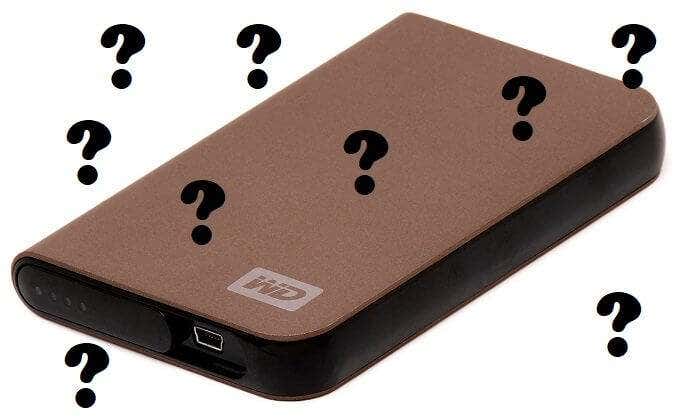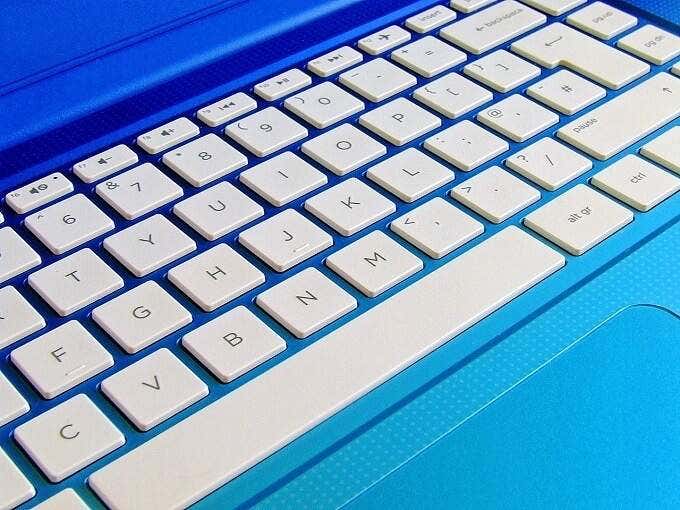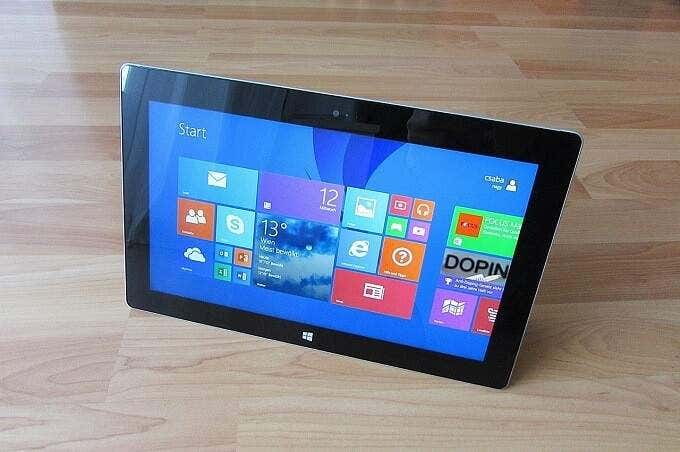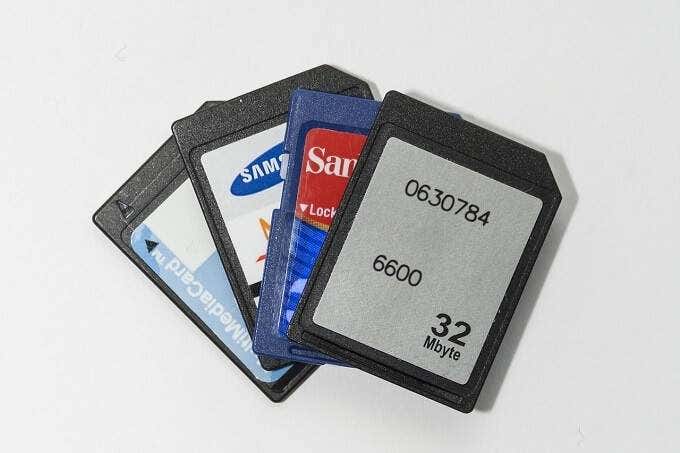External hard drives, flash drives and other similar forms of removable storage have made life pretty easy when it comes to moving data around. However, we live in a world where each person is likely to own multiple devices that external storage could (theoretically) be connected to.
There are also various use cases for external storage and, importantly, plenty of formats to choose from. So when you have to pick a format for your shiny new external storage device, what is the best format for external hard drives?

Just What Is a Disk “Format”?
What does it mean to “format” a disk? What is a disk format anyway? It’s actually pretty easy to understand. Your SSD, hard disk, flash drive, SD card or whatever storage medium you’re working with has a set amount of raw physical space.
For example, an SSD consists of microchips that contain microscopic memory cells. Each cell can hold a specific number of “bits”. That is, the ones and zeroes that make up binary code. Think of it as a gigantic room filled with empty book shelves.

A format is the organizing principle we use to fill that space with data. In a library, something like the Dewey Decimal System is used to determine in which order books go on the shelves. This makes it very easy to find a specific book. In the same way, a disk format tells the computer how to store information on the disk.
Some disk formats are more efficient than others, while certain formats are simply not compatible with particular operating systems.
Can macOS Read Windows Formats?
Out of the box, macOS can understand exactly two formats from the world of Microsoft Windows. The first is FAT and the other is exFAT, which we’ll discuss a little later.
The main Windows disk format, NTFS, isn’t supported by macOS. At least, not entirely. NTFS disks can be read by macOS, but not written to. That’s useful if you need to get some data from a friend’s Windows disk, but if you use both Windows and macOS, you’ll need a different option. The most likely choice is exFAT, which we’ll go into more detail below.

You also have the option of using third-party addon applications, but of course this is hardly the most elegant solution. This is a particularly important point if you use BootCamp on your Mac, since you don’t want to lose access to external storage just because you booted into a different operating system.
Can Windows Read macOS Formats?
Windows PCs can not read macOS formats. The file systems used by macOS aren’t ones that Windows can understand by itself. It needs a little help in the form of a third-party application to read and write to these disks.

The only free application that will let you do this we are aware of is hfsexplorer, which uses Java and is really only suitable for the odd file transfer.
FAT32 – The Most Compatible Option
The FAT or File Allocation Table is quite possibly the most widely-supported disk format in existence today. It’s a direct continuation of the original DOS format used on floppy diskettes and hard drives. FAT32 exists mainly to extend the absolute file size that older versions of FAT can handle. The largest single file size that FAT32 can handle is 4GB.
That’s probably OK for most files, especially if you’re using a thumb drive rather than an external hard drive. However, it’s pretty normal these days to have video files or other high-fidelity assets that are larger than 4GB, which makes this unsuitable for large drives that are likely to host bigger files.

If you absolutely know that you won’t have any files larger than 4GB and want to use the drive with devices such as older TVs that don’t support exFAT, then FAT32 is a good choice.
Using Apple and Windows? You Want exFAT!
exFAT solves the file size limitation of FAT32 and manages to remain a fast and lightweight format that doesn’t bog down even basic devices with USB mass storage support.
While exFAT is not quite as widely supported as FAT32, it’s still compatible with many TVs, cameras and other similar devices. Most importantly, exFAT works with both Windows and macOS.

The only real downside of exFAT for external hard drives is its lack of “journaling” ability. This means it doesn’t have the ability to keep a record of file changes. One of the consequences of this is that exFAT drives are a little more vulnerable to data corruption from sudden power losses.
Be sure to either make your drive safe to remove or to avoid unplugging it while its reading or writing to the disk.
NTFS – For Windows Users Only
NTFS or the New Technology File System is the current Windows default. It’s the most secure, robust file system that a Windows user could wish for. This means it’s the format of choice for system drives on Windows computers.
NTFS has quite a lot of strong advantages, which may actually make it a good format choice for certain external hard drives, depending on the circumstances.

- NTFS is resistant against disk corruption caused by a power failure.
- It has extensive security features, such as per-folder permissions.
- Making is simple for multiple users to share the same drive without having access to each other’s data.
- It’s also notable for its journaling feature, which keeps a record of file changes. This is part of the reason why it’s more resistant to file corruption.
If you want to use your external drive with Windows machines only, NTFS is a fine choice and probably the best option overall. However, if you need to use the drive beyond the confines of the modern Windows ecosystem, it’s better to go with exFAT instead.
If you already have a drive that’s formatted in FAT, you can still convert it without losing data.
Best Formats For Linux External Hard Drives

Linux distributions such as Ubuntu Linux are becoming more popular by the day, but are still relatively niche overall. Linux has its own proprietary EXT formats and if you are only going to use your external drive with a Linux machine, you can safely go ahead and pick that format.
However, Linux supports NTFS, which makes for a decent go-between if you have both Windows and Linux machines. Mac can also read NTFS. The most compatible option is FAT32, but as we mentioned above it has a hard 4GB limit on file sizes.
Unfortunately, Linux does not yet have support for exFAT, but that is reportedly set to change with the release of Kernel 5.4.
What About SD Cards & USB Thumb Drives?
The choice for the best format for external hard drives involves different considerations compared to other forms of external storage. SD cards and USB thumb drives are still an important part of our digital lives, so which formats should you pick?
With the fairly cheap yet large flash drives we have today, there’s some overlap in the use cases for thumb drives and external hard drives. Which means you may want to use large files, such as HD video files, on your thumb drive. That makes exFAT a good choice. Especially if you also want to use your thumb drive with iPads, iPhones and Macs.

FAT32 is a fallback if you want to use your thumb drive with older devices that don’t support exFAT. Of course, if you’re also going to use your thumb drive on your current Linux machine, exFAT won’t work at the time of writing. However, that’s set to change in the future.
With SD cards, your choice should be entirely driven by which formats the devices you use support. exFAT is still a good choice if your DSLR (for example) supports it, but follow the manufacturer’s recommendation. In fact, most devices have an internal SD card formatting routine, so we recommend you simply let the intended device format the card.
Ending The Format Wars
Picking a format for your external drive can be pretty confusing. Picking the wrong one can turn into a real pain when you have to backup and reformat an entire drive because it won’t work for its intended purpose.
Hopefully you now know which options above to pick from the list of best formats for external hard drives, which can save your bacon when making the wrong choice can lead to a situation where an external disk just won’t plug-and-play.